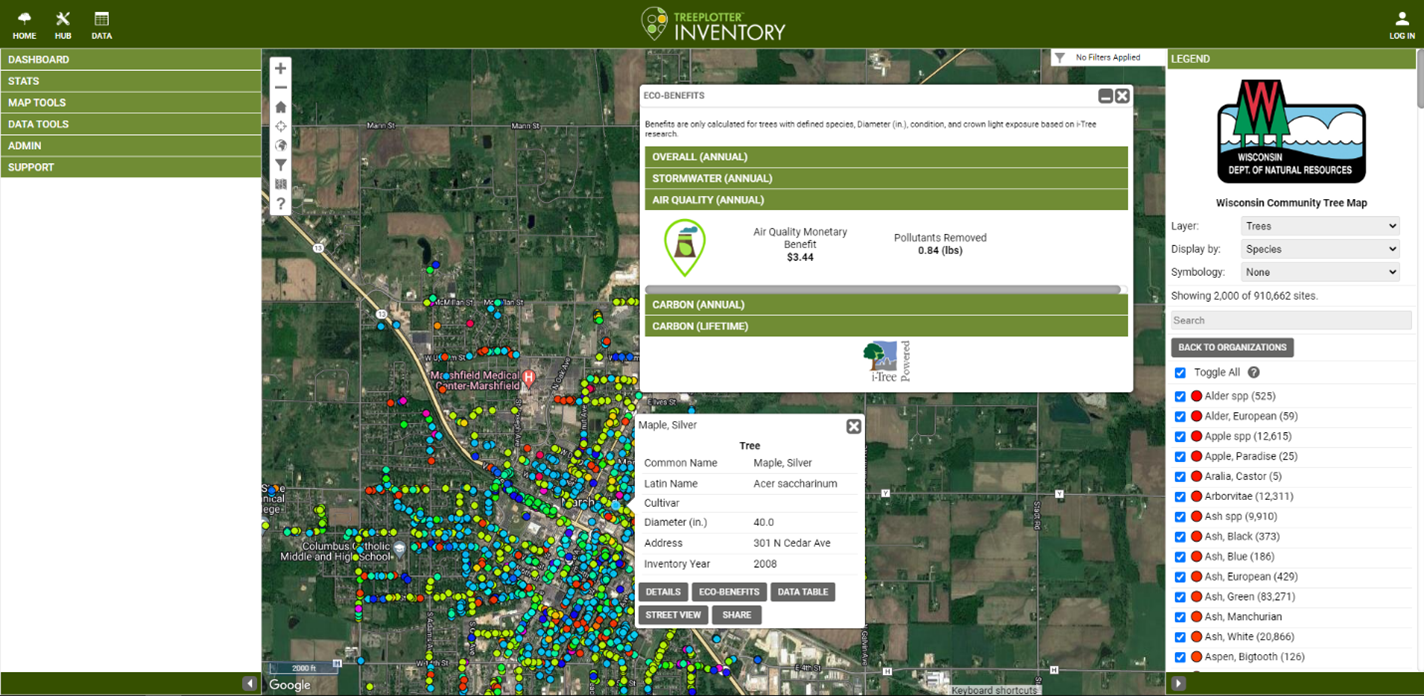By: Dan Buckler, Urban Forest Assessment Specialist
The scientific community continues to grow its understanding and appreciation of the ecosystem services that urban trees offer. That is, we now know more about the good trees do, but we also better understand what we don’t know. This nuanced perspective has manifested itself in updated estimates of ecosystem benefits within the Wisconsin Community Tree Map (WCTM).
The WCTM is a compilation of tree inventories from around the state, comprising 910,000 trees across 180 organizations. One of the application’s many interesting and useful functions is the estimation of trees’ eco-benefits. This information can be found for an individual tree simply by clicking it and then the “Eco-Benefits” box. The eco-benefits can also be estimated for a collection of trees by navigating to the “Hub” tab, then clicking “Stats” and “Ecosystem Benefits.”
Estimated benefits showcased in the tree map include annual stormwater reduction, air pollutant reduction and carbon sequestration, as well as lifetime carbon storage. All these benefits are expressed by quantity, volume or weight and by the monetary impact of the trees.

Example of the TreePlotter Inventory Map
Current users of the map’s eco-benefits tool will recognize the above benefits from the previous iteration; however, the numbers produced by the tool will most likely be different from what was there previously. This reflects a new connection between the map’s host platform (PlanIT Geo’s TreePlotter) and more refined ecosystem service estimates from i-Tree, a USDA Forest Service software suite that converts tree data into ecosystem benefits.
Trees’ role on property values and energy savings is no longer in the system as they are unwieldy to estimate using data from a normal tree inventory. However, if you need more detailed information on any of the benefits displayed or rough estimates of the replacement value of the trees in your inventory, please contact me at daniel.buckler@wisconsin.gov.
The urban forest is an important piece of infrastructure in your community, and the eco-benefits within the tree map ultimately describe just a small slice of all the good things trees do. If you need more ink to pen the story of your trees, don’t hesitate to reach out to myself or any regional coordinator. And watch these pages for future resources and summaries of new findings.
